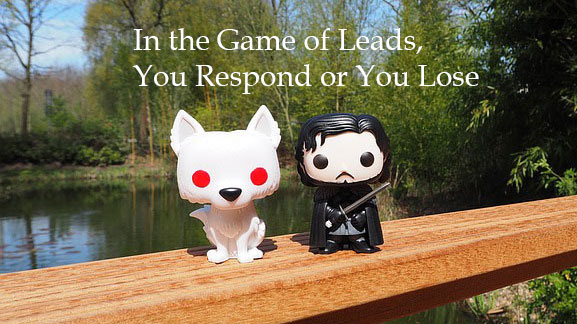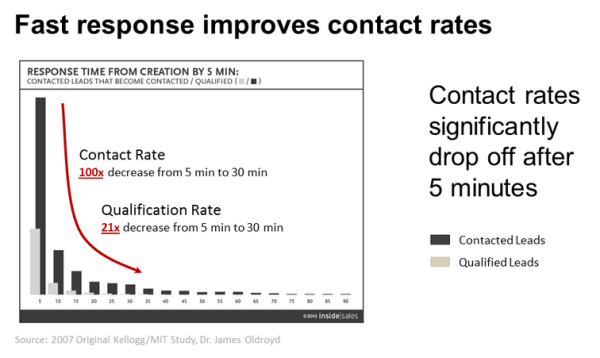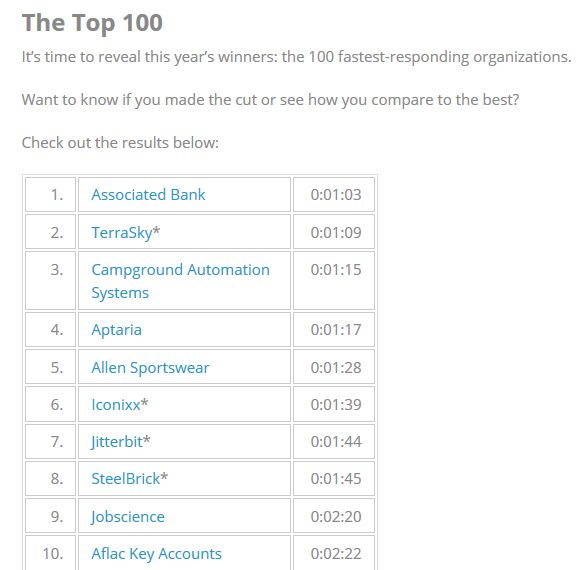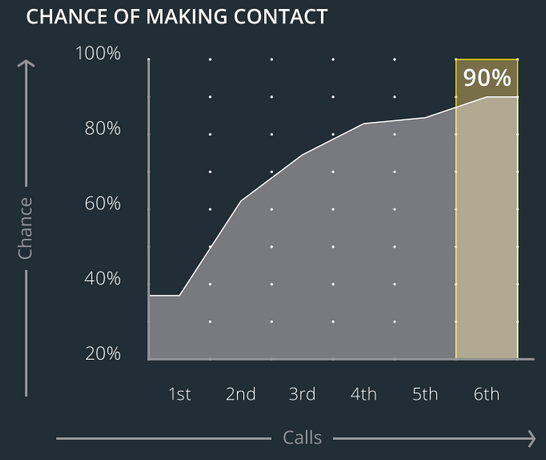Fast lead follow-up can be the difference between a sale and a missed opportunity.
In a world where consumers expect instant responses, reaching out to leads quickly builds trust, capitalizes on their interest, and improves conversion rates. By implementing strategic practices, automating processes, and addressing common obstacles, businesses can optimize their lead response times, increasing their chances of turning prospects into loyal customers.
Key Takeaways:
- Importance of Immediate Response: Leads are 100 times more likely to convert when contacted within five minutes versus 30 minutes after form submission.
- High Cost of Delayed Follow-Up: Delaying responses to leads can mean wasted marketing spend, as customer interest fades rapidly.
- Persistence in Follow-Up: Successful companies make multiple attempts to contact leads, surpassing the average 2.8 follow-ups.
- Cost of Ignoring Leads: Companies invest heavily in lead generation; failing to respond promptly wastes this investment and leads to missed sales.
- Case Studies Highlight Benefits: Studies by HBR and Conversica emphasize the ROI of fast lead responses, particularly in high-stakes industries like automotive.
Something Smells Fishy
Seafood lovers love fresh fish. Fishermen go to great lengths to keep their catches fresh and sellable.
Your online marketing is a stream for catching leads. Once these leads are caught, you need to sell to them when they’re fresh.
Why? Because leads spoil:
“[A] rep is 100x less likely to make contact if the first call is made 30 minutes after submission. The odds of making contact drop by 3000x if the first call is made 5 hours after lead submission.”
Lead generation reels a potential customer in but if you leave them on the hook to dry, these prospects will never make you money at the fish markets.
“Our own in-house research shows only 27% of leads ever get contacted. Yet with a combination of awareness, best practices, and technology; companies can contact around 92% of leads.”–Ken Crogue
Increasing response rates from 27% to 92% causes a 314% lift in results. That’s a huge lift! All you have to do is respond immediately and persistently to leads.
Not a Fan of Fish? We’ll Let You Off the Hook
Ken Crogue puts a concerning number to CEOs:
“[I]f you proved 71% of the leads your company generates on the Internet are wasted? Who would be fired?”
Hubspot contributor Chris Getman uses a car salesman to make another analogy for lead response time: you are in the market for a new car, do some research, find a dealer and go to his dealership. When you arrive you get this response from the dealer:
“Thank you for contacting me, I’ll be in touch in 24–48 hours,” and walks away. The car salesman calls you two days later, on Monday, while you’re at work, to talk about the car.”
Not exactly optimal. But Chris’s analogy is intriguing because another study found that automotive dealers are actually some of the best responders to online leads with 96% of their lead responses occurring within 24 hours of a lead submission.
But even in the top lead response time industry there are leads going bad:
“Like other industries, nearly 25% of automotive dealers in the study did not respond to a direct sales inquiry from their website.“
“As with our overall research published earlier this year, I’m both excited and frustrated by the results specific to the automotive industry,” said Alex Terry, CEO of Conversica
You’re Paying for these Sales Leads, Use Them!
Olenski, author of the Forbes article linked first in this post, summarizes the frustration of wasting money on lead generation:
“[C]ompanies spend anywhere from $30 to $200+ on each marketing generated lead while B2C firms typically spend from $2-25 for each hot lead.”
And that Elkington, an involved researcher, comments:
“[I]f a CEO realized the amount of money they were throwing down the drain in terms of wasted leads and lower close rates due to no-follow-up, slow-follow-up and low persistence, they would shake the tree and turn things upside down.”
Harvard Business Review’s article and study, “The Short Life of Online Sales Leads,” discusses the incredible amounts of resources being devoted to lead generation as lead capturing methods fall behind. 2,241 U.S. companies data showed that:
- 37% responded within an hour
- 16% responded within 1-24 hours
- 24% took more than 24 hours
- 23% never responded at all
HBR crystallizes its point by referencing a previous report which analyzed 1.25 million sales leads received by 29 B2C and 13 B2B companies:
“Firms that tried to contact potential customers within an hour of receiving a query were nearly seven times as likely to qualify the lead … as those that tried to contact the customer even an hour later—and more than 60 times as likely as companies that wait 24 hours or longer.”
Spending resources, whether on PPC or other lead generation mediums, pays off best when leads become sales and customers. Leads become sales and customers when they’re responded to!
You have to respond quickly and constantly to make money from your leads.
The Importance of Selling to Freshly Generated Sales Leads
Prospects come to your site for information. They’re researching if what they want is what they really want, and if you can help them.
When a prospect submits a lead form, they’ve been convinced that you might have something that’s worth paying for. You have a small window to convince them.
The prospect needs to be contacted immediately. If you contact the prospect when he or she is hot and interested, you’re far more likely to not only reach him/her, but also to make the sale.
Lead Generation Marketing in Westeros

Jon Snow is looking for the latest time management software. He’s fallen behind with paperwork at the Night’s Watch due to many action-packed events, but, as we all know, the boring stuff has to be done.
He’s just in luck because you are the CEO of an impressive time management solution. He sees one of your PPC raven ads and is persuaded by your impressive parchment landing page to submit his information.
Now he has to wait for your follow-up and the numbers don’t look good. Insidesales surveyed Dreamforce 2015 participants and the average online lead response time was 37 hours and 25 minutes.
Now what does Jon do in the meantime? Perhaps he does a bit more research, submits a few more online leads.
Or he goes through his emails, moodily broods, breaks his vows to the watch, etc. The point is that his attention and concern for your offering dwindles by the minute.
Snow was interested, but who knows if he will be later when your salesperson calls him at dinner?
His intent is going stale along with the possibility of a sale:
“if a lead is called within five minutes versus 30 minutes after it’s submitted, that lead is 100 times more likely to be contacted and 21 times more likely to enter the sales cycle.”
Persistently Respond and Profit
Steve Olenski visualizes the stats from above:
So who’s more likely to get Jon Snow’s business? Your company or Lannister Lead Generation Company which has a strict policy of a 2 minutes or less sales leads response times?
2 minutes! That’s a fanciful metric for a fanciful corporation but the Insidesales survey says it’s not fanciful at all.
Those are some inspirational numbers. And don’t be intimidated if your business is limited, there’s still hope.
You just need to aim to respond faster and more persistently than your competitors.
Why Fast Follow-Up Matters for Lead Conversion
In today’s digital age, customers expect instant responses, and timing can make or break a sale.
When a lead submits their information, they are likely at the peak of their interest. Responding quickly taps into this urgency and significantly increases the chances of conversion. According to studies, leads contacted within five minutes of submission are up to 100 times more likely to convert than those contacted even 30 minutes later.
This “golden window” of opportunity diminishes quickly; waiting hours or days drastically reduces the likelihood of engagement. In a competitive market, a fast response not only improves conversion rates but also builds trust and demonstrates a company’s commitment to customer service.
6 Best Practices for Rapid Lead Response
To optimize lead response times, businesses can implement several key practices:
- Automate Initial Contact: Use automated email or SMS responses to acknowledge a lead’s inquiry instantly. Automation ensures that leads receive immediate feedback, even outside business hours.
- Prioritize Leads by Intent: Not all leads are created equal. Utilize lead scoring to identify high-intent leads and ensure these are handled with top priority.
- Set up Lead Notifications for Sales Teams: Real-time notifications can alert sales reps whenever a new lead is generated. This allows them to respond promptly, keeping the lead warm and engaged.
- Establish Clear Response Time Goals: Set realistic response time targets for your sales team, such as responding within five minutes during business hours. Regularly monitor and adjust these goals based on team capacity.
- Follow Up Persistently but Respectfully: Research indicates that multiple follow-ups improve conversion rates. Aim for at least five attempts across various channels (phone, email, SMS) to reach the lead.
- Track and Measure Performance: Use CRM tools to monitor response times and follow-up attempts. Analyzing this data can help identify gaps and streamline processes for faster response times.
Common Obstacles to Quick Lead Response (and How to Overcome Them)
- Limited Resources: Small businesses or startups may struggle to handle high volumes of leads promptly. Solution: Leverage automation tools and prioritize high-intent leads to ensure quality responses even with fewer resources.
- Lack of Centralized Systems: Leads can come from multiple sources (website, social media, ads) and managing them manually may lead to delays. Solution: Use a CRM system to centralize and organize leads, ensuring no inquiry falls through the cracks.
- Time Zone Differences: For businesses with a global reach, responding quickly can be challenging across time zones. Solution: Implement automated responses to acknowledge lead inquiries, and if possible, set up a rotational team structure to cover key time zones.
- Difficulty Reaching Leads on the First Attempt: Many leads are not reachable on the first call or email, and one follow-up may not be enough. Solution: Develop a follow-up cadence with multiple touchpoints to increase the chances of connecting with the lead.
- Inconsistent Lead Handling Process: Without a clear protocol for managing and following up on leads, teams may fail to act quickly. Solution: Create a standardized lead response protocol and train team members on best practices, ensuring consistency across all leads.
Converting Online B2C & B2B Leads
Respond faster! A fresh lead has your business top of mind, and is already a good ways down your sales funnel—take advantage and close the deal.
Even if you can’t sustain the prompt response times listed above, any improvement will improve sales.
Follow-up diligently! If you can’t reach the lead within 5, 10, 30 minutes, etc., make sure you’re calling periodically to ensure contact.
Insidesales has a graph which demonstrates the success of many follow-ups:
The participants surveyed had an average call attempt number of 2.8. Are you aiming to be average? No! Call more! The data shows that 2.8 is less than ideal.
Just think about it: if you want to learn more about a product/service, will you be more receptive to talking about it while it’s fresh in your mind, or the next day while you’re relaxing with a steaming coffee and a million emails in your inbox?
Don’t waste money spent on lead generation by ignoring the leads you generate! It’s a simple idea, but can be difficult to implement. Work incrementally towards that instantaneous response time!
Respond to your leads quickly and repeatedly!
The Studies:
Insidesales and Dr. James Oldroyd study, which everyone references and is likely the charter document of lead response research, is available under the title “The Lead Response Management Study”
HBR’s study, “The Short Life of Online Sales Leads”
Conversica’s automotive study, “Sales Effectiveness Report: Lead Follow-Up”
The post 3 Response Time Studies: Lead Generation & Wasted Sales Leads appeared first on Vantage Search Marketing.


